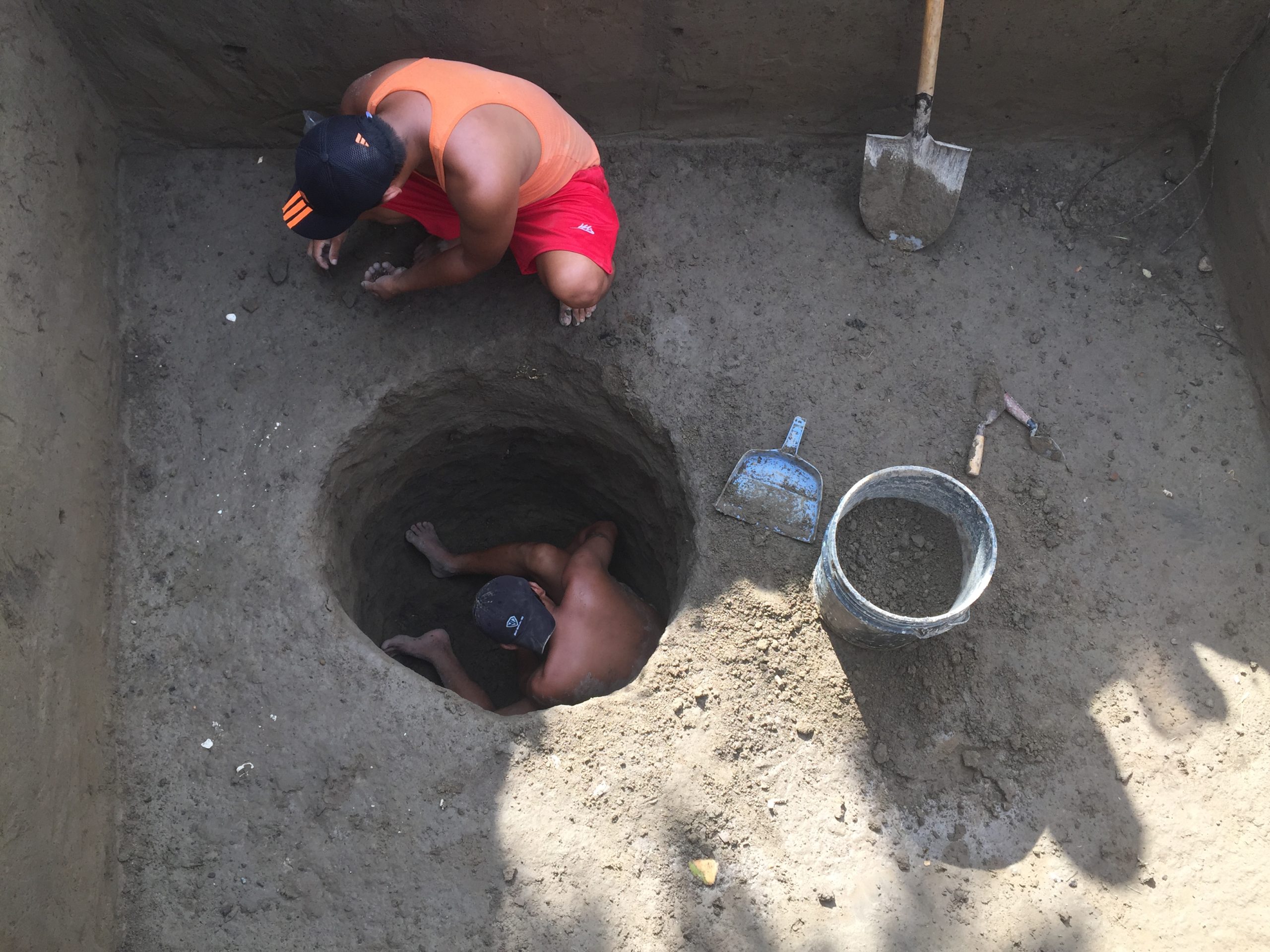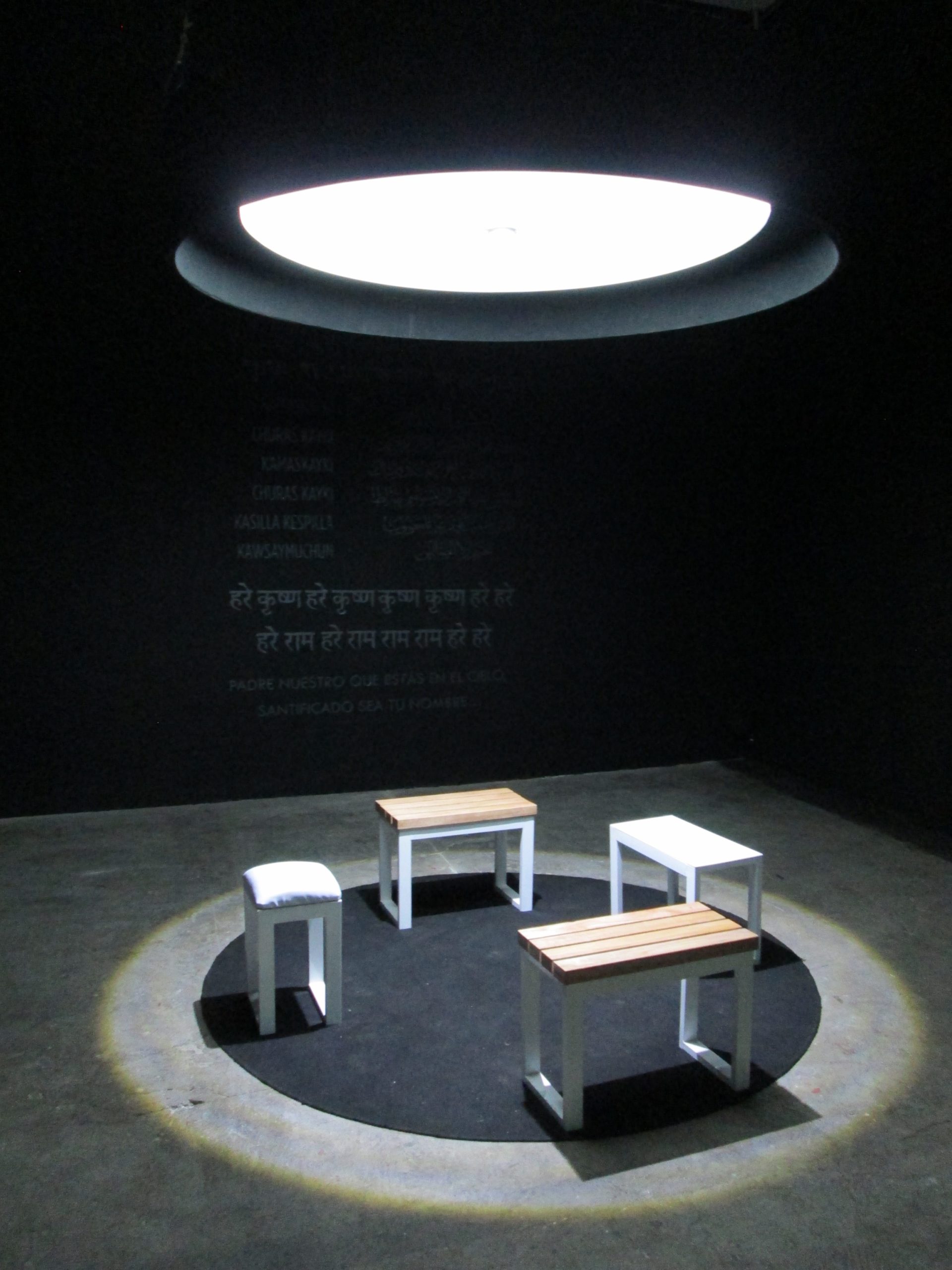Article begins
Consider the following four scenarios. An indigenous Kichwa student works with her own family and community as part of a language documentation and dialect diversity project led by her linguistic anthropology professor and resulting in her senior thesis. Physical and cultural anthropologists collaborate with museums, microbiologists, and representatives of Shuar indigenous communities to conduct and interpret DNA analysis on shrunken heads, or tsantsas, historic objects important to cultural identity even if no longer produced in practice. Archaeology professors and students work with a local cultural association in a small coastal fishing community to recover archaeological heritage, design a community museum, and strengthen green economies. Finally, cultural anthropology professors and students collaborate with a dozen religious communities, as well as visual and digital media and museum professionals, to produce a temporary ethnographic exhibition, an edited volume, and website on religious and spiritual diversity in a large city.
Another key element of our collaborative approach is to seek ways to decolonize, redistribute and democratize power towards local participating communities while nonetheless remaining reflexively critical about our own positionality, privilege, and praxis.
These scenarios derive in fact from real projects that have been carried out at my home institution, Universidad San Francisco de Quito (USFQ), and they suggest the possibilities of a four-field, collaborative anthropology that also links professors, students, and diverse communities across public, private, and civil society sectors in collaborations that dynamize teaching and produce publicly relevant, applied scholarship. When the anthropology faculty at USFQ created our undergraduate major a few short years ago, we envisioned a program that would emphasize not only the broadest, four-field version of the discipline we could manage but also a holistic approach to applied practice centered on the power of diverse social actors and institutions en colaboración, that is, laboring together on anthropological issues that are relevant and meaningful for local communities.
This holistic approach to applied collaborative anthropology often involves intradisciplinary linkages across our subfields or interdisciplinary linkages with other fields, such as the case of the electrical engineering student with an anthropology minor who in his senior thesis researched photo digitalization systems to help read petroglyphs. Holistic collaborative practice has also meant promoting cross-fertilization among the domains of research, teaching, and public scholarship, as many of our collaborative projects have been simultaneous incubators of academic publications, conferences, courses and field school experiences, student theses, internships, volunteer projects, community initiatives, and public exhibitions or presentations. Another key element of our collaborative approach is to seek ways to decolonize, redistribute and democratize power towards local participating communities while nonetheless remaining reflexively critical about our own positionality, privilege, and praxis.

Image description: Two people kneel at in a square-shaped excavation unit, and one of the men is in a deeper circular pit within the larger excavation unit. A bucket filled with dirt, along with trowels and a shovel are in the unit as well.
Caption: Two members of the Coaque-USFQ Community Archaeology Program work in an excavation unit. Josefina Vásquez
Our community archaeology program grew out of an earlier collaboration with Engineers without Borders in the highland community of Tingo Pucara but now works most actively with the coastal community of Coaque, along with other communities like Julcuy and Cangahua on the mainland and El Progreso on San Cristóbal Island of the Galápagos. Coaque, in particular, is a modest fishing village located on a site of multiple human occupations, the most important of which are the Valdivia and Jama-Coaque cultures. When the mancha blanca virus increasingly began to destroy the local commercial shrimp industry, some of the local men turned to being huaqueros, or looters, sometimes presenting ceramics directly to the Instituto Nacional de Patrimonio Cultural offices in the hope of receiving remuneration, according to colleague Florencio Delgado (Delgado likes to refer to this group jokingly now as ex-huaqueros or “converted looters”). Delgado and fellow archaeologist Josefina Vásquez initiated a relationship with the community, particularly their local cultural association, with one of the first initiatives being the training of locals in basic archaeological methods, an effort that was led by local collaborators from the pioneering and exemplary community archaeology project at nearby Agua Blanca.
According to Delgado, the program accomplishes a sort of rescue archaeology in a context of scarce infrastructure but has nonetheless developed a series of synergetic purposes for the past and the present, centering theoretically and practically around issues of heritage, territory, and politics. The community’s yearly festivals now frequently feature an archaeology tent, and local project participants have presented at academic events such as the Congreso de Teoría Arqueológica Sudamericana, held in Ibarra in 2018.
In the end, we have found collaborative anthropology to have humanizing qualities that forge social ties, obligations, and reciprocities and that require collective reflexivity, dialogue, and negotiation.
The program has collaborated with Coaque in the design of a future Archaeological and Astronomical Museum, whose planned architecture is inspired by a Jama-Coaque dwelling. In class field visits to Coaque as part of our new community archaeology course or other courses, students are housed with host families, providing a context for intercultural exchange as well as a source of income for families. Indeed, Delgado was in Coaque with a group of students when the massive 7.8 earthquake of 2016 struck the region, a shared experience which remains significant in both community and university memory. Students occasionally make return visits to their host families and tell of how the families make their tonga snacks for the field (a small meal wrapped in plantain leaves). Indeed, this led one student to focus a thesis project on how local identity rests in a sense of pride about having rich access to quality ingredients and food. Also responding to this, the community archaeology program is beginning to collaborate with green entrepreneurship projects that seek to focus on more sustainable and artisanal fishing and shrimping practices, as opposed to industrial methods that tend to destroy local mangrove ecosystems.
Cultural and linguistic anthropologists in our program are also embracing a collaborative ethnographic and applied vision. In addition to language documentation projects referenced in the opening, other recent projects have included partnering with hospitality and tourism colleagues to research and support ecotourism initiatives in indigenous Achuar and Kichwa communities and an organizational ethnography focused on cultural change in conjunction with a large, private-sector bank. However, the project on religious and spiritual diversity mentioned in the opening perhaps best illustrates the potentials of applied collaborative ethnography. In this case, the foundation for Quito’s city museums partnered with our university’s social sciences and humanities departments to undertake several curatorial initiatives that would emphasize Quito’s religious and spiritual diversity and foment greater understanding, empathy, and inclusion. Colleagues in cultural anthropology directed student ethnographic teams and guided collaborations with audiovisual and digital media professionals, curatorial and other museum professionals, and leaders and members of over a dozen religious and spiritual communities in producing a temporary ethnographic exhibition in 2015–2016, a permanent online exhibition and an edited volume featuring chapters by student ethnographers as well as the project directors (Diversidades espirituales y religiosas en Quito, Ecuador: Una mirada desde la etnografía colaborativa). The project provides descriptive ethnographic information about Quito’s diverse spiritual and religious groups, including Jewish, Muslim, Orthodox Christian, Catholic, Protestant, Regla de Ocha (santería), indigenous Andean, Mormon, Krishna, Kundalini Yoga, and Misión Rahma communities (the latter an esoteric group focused on extraterrestrial contacts). Analytically, these communities were not isolated in essentialist fashion but rather placed in intercultural conversation around key interpretive themes that included sensory landscapes, cosmology and time-space, ritual and conversion, bodies and embodiments, and sacred communication, among others. The participating religious communities were heavily involved in research design, implementation, interpretation, and critical editing of the museum exhibition, website, and book.

Image description: Four empty white benches are arranged around the center of a dark room. A circular window on the ceiling lights the room, and religious messages in different languages are printed in white are visible on one of the room’s black walls.
Caption: In Quito’s Museo de la Ciudad, a space for dialogue and reflection in the “Comunicación sagrada” salon of the collaborative ethnographic exhibition, Espiritualidades en Quito. Michael D. Hill
In the end, we have found collaborative anthropology to have humanizing qualities that forge social ties, obligations, and reciprocities and that require collective reflexivity, dialogue, and negotiation. The projects I have described have not been without their challenges, and collaborators do not always agree (or need to agree), but transparent communication, patience, and willingness to negotiate have been important tools in overcoming or managing the inevitable tensions and frictions that come with collaboration. As one student described of her experience in the project, “The challenge was to try to understand one another in a space of difference. What I learned was to place myself in their shoes and appreciate a different way of thinking than my own. In spaces like this, we are all able to share our opinions and beliefs and have an opportunity to tear down walls and find more points of connection than of conflict.” Indeed, this is perhaps the greatest human promise and benefit of collaborative anthropology, and as we continue building this vision, we encourage in the same spirit any interested readers to contact and collaborate with us!
Michael D. Hill is professor of anthropology at the Universidad San Francisco de Quito in Ecuador. His research and teaching interests include tourism and the politics of heritage, ethno-racial politics, economic and organizational anthropology, and collaborative ethnography and life history methodologies.
Please contact Joseph Feldman ([email protected]) with your essay ideas for the SLACA section news column.
Cite as: Hill, Michael D. 2020. “Building Collaborative Anthropologies in Ecuador.” Anthropology News website, September 10, 2020. DOI: 10.14506/AN.1485

